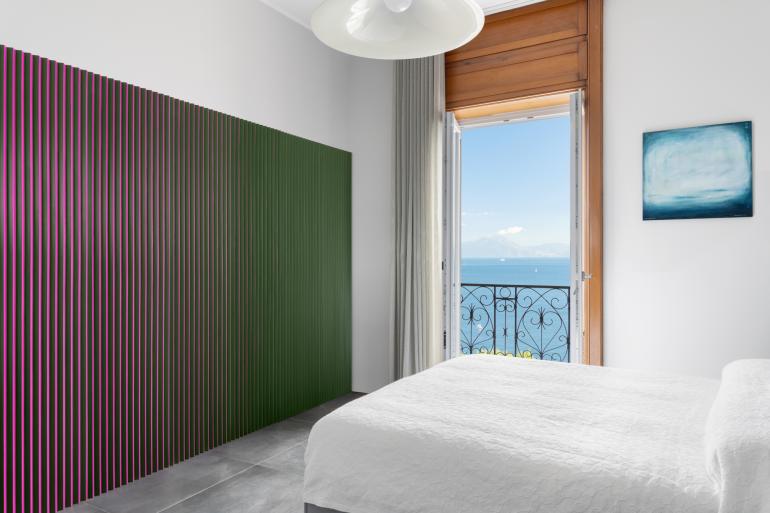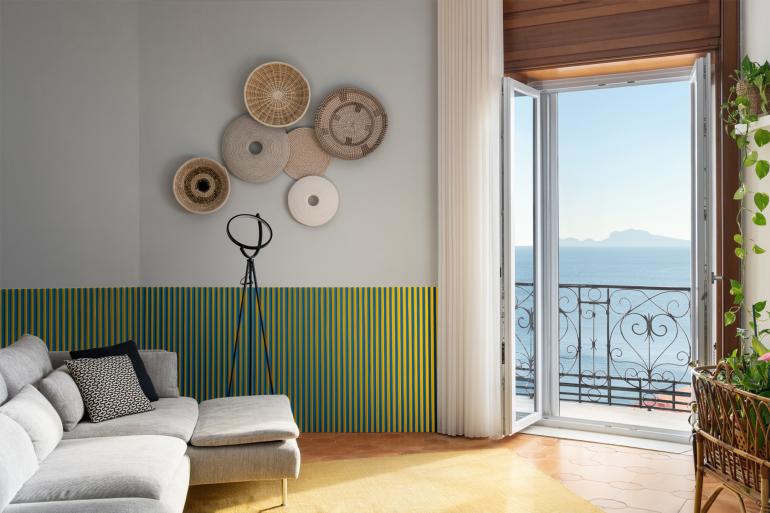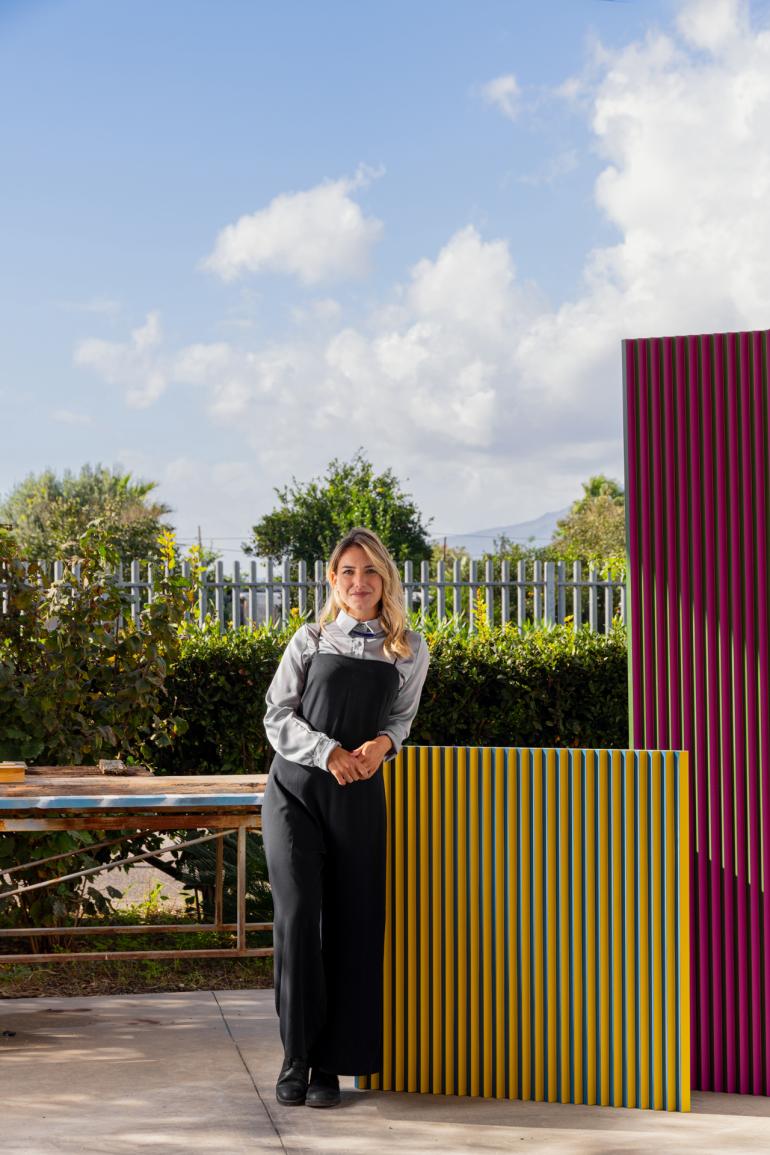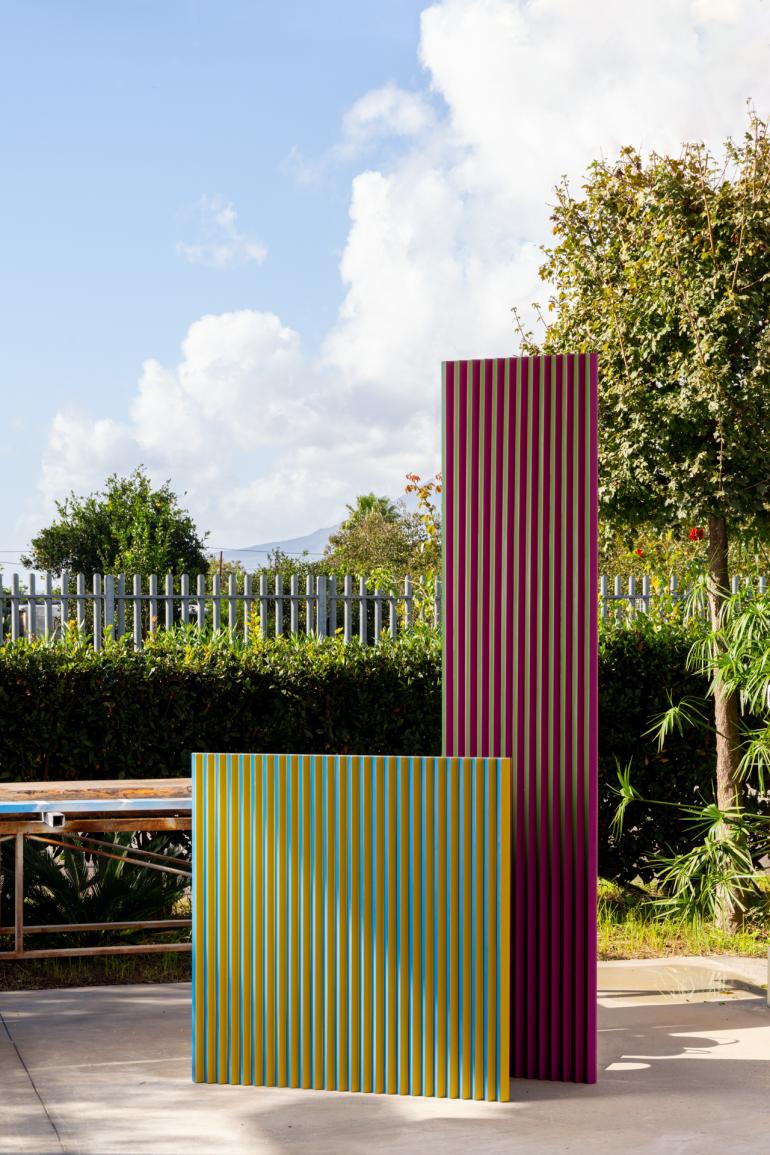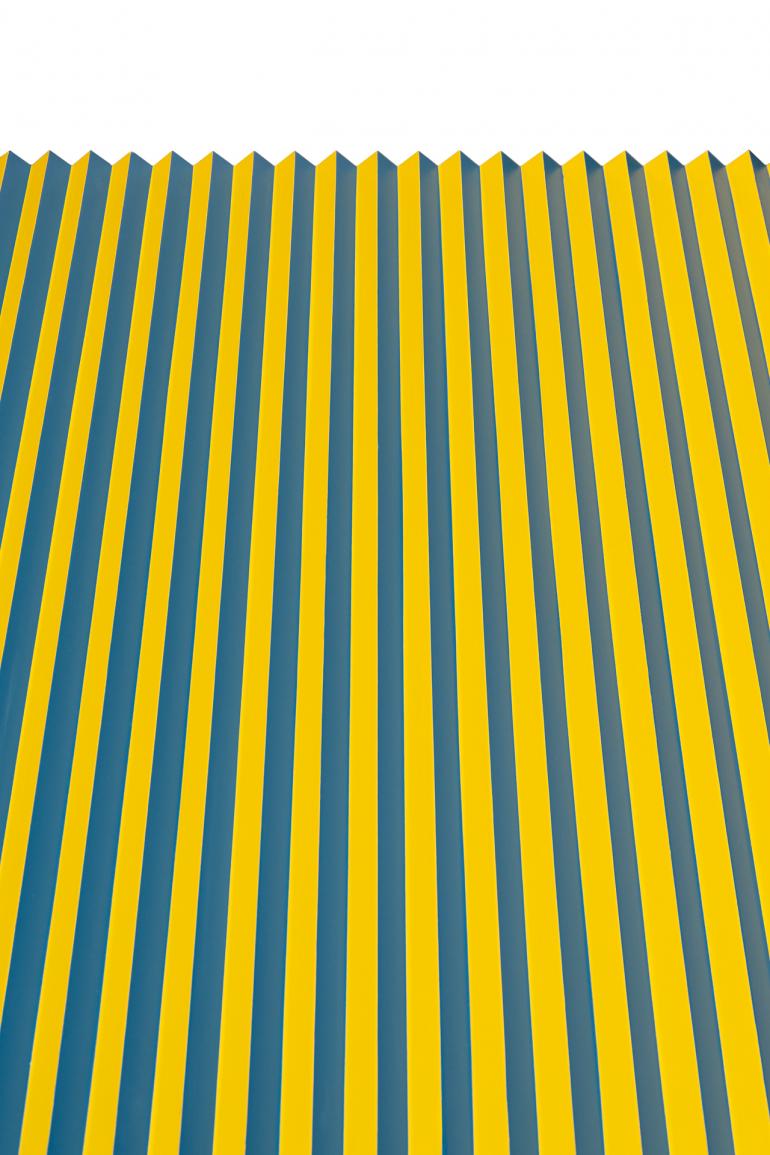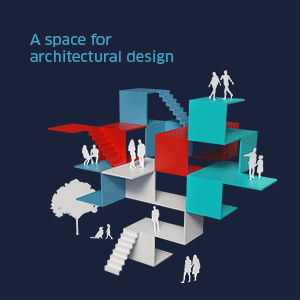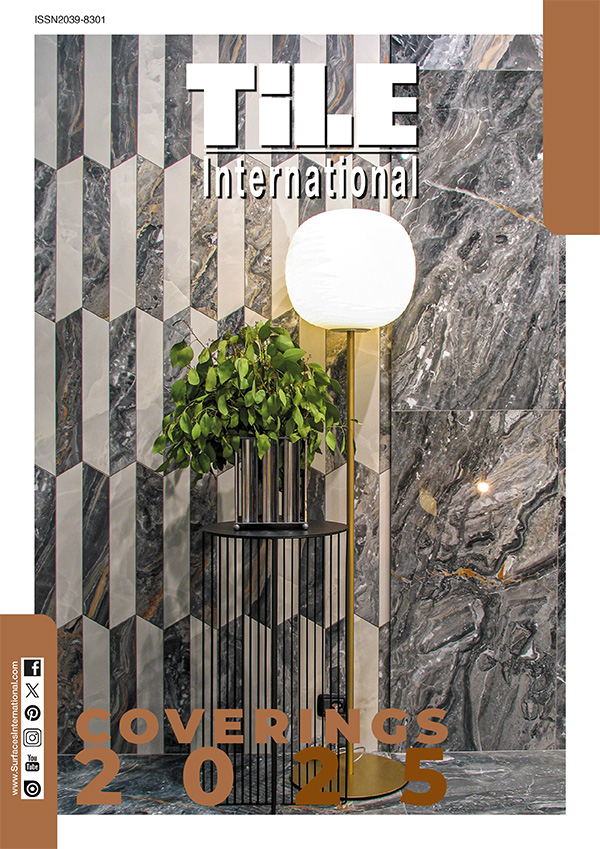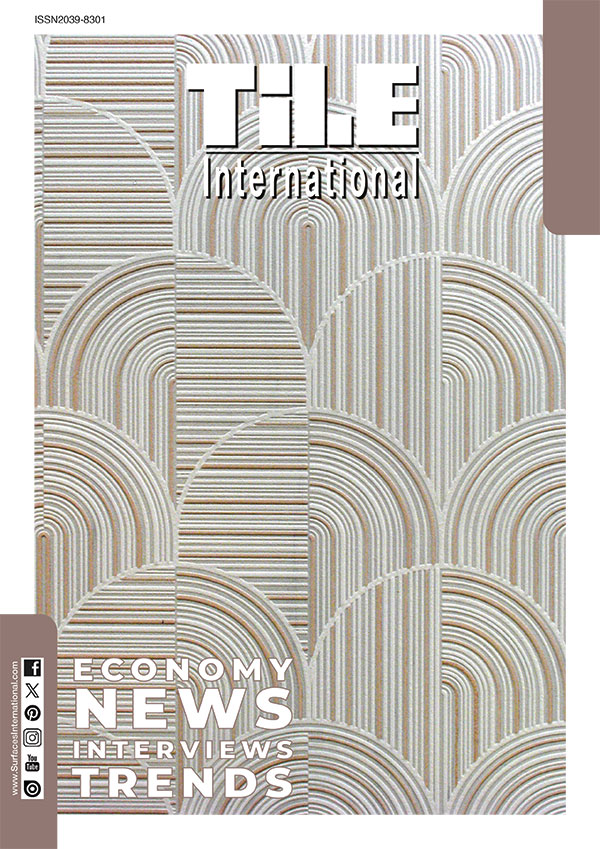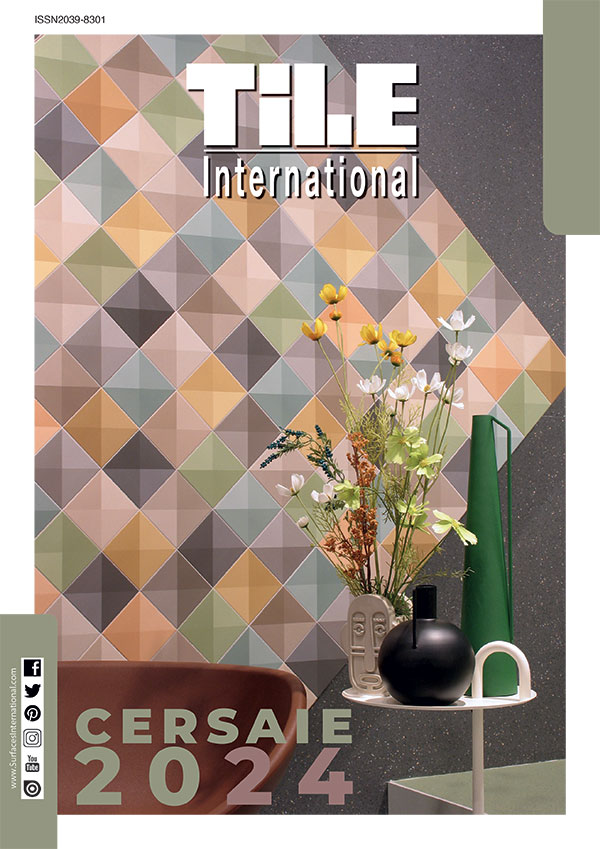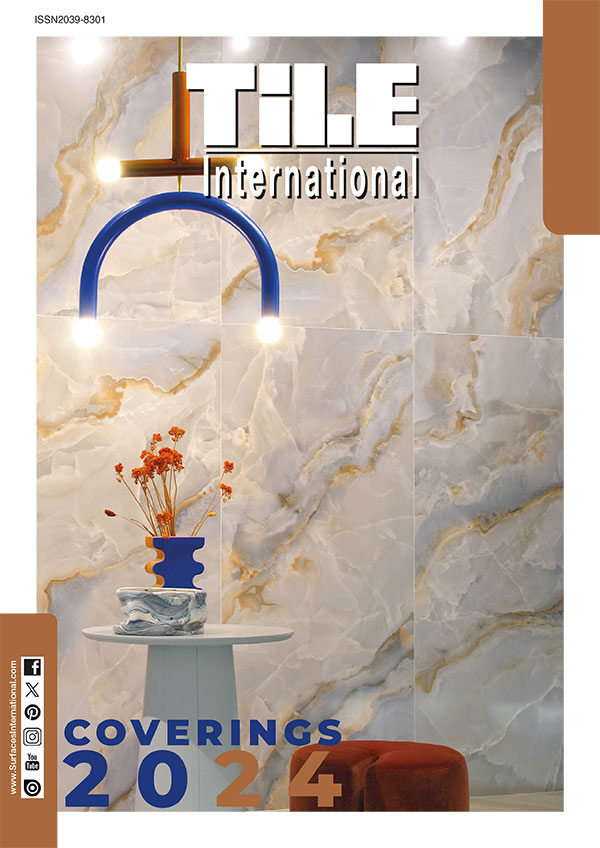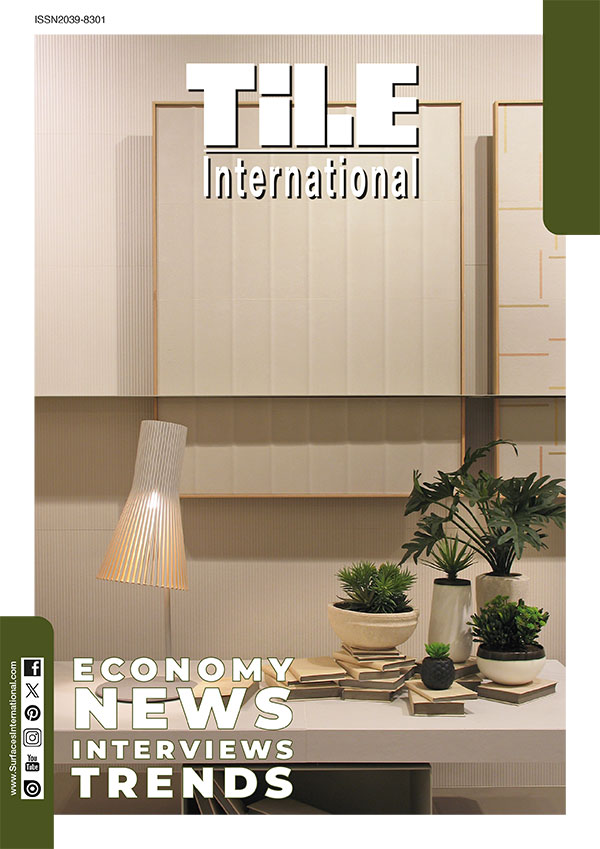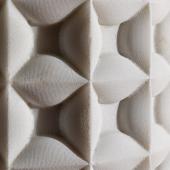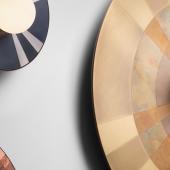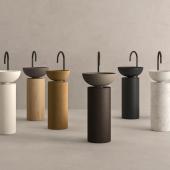GIANAdesign
Viviana Del Naja, architect, designer, and founder of GIANAdesign, is pursuing a project born from the intersection of visual perception, material, and color theory, transforming design into an experience that evolves over time. Through profound research into culture, light, and materials, Viviana reinterprets traditional elements with a contemporary twist, creating furnishing products that stimulate the mind and senses. She told us about her journey, the philosophy that guides her work, and the innovative Madeira project, a three-dimensional decoration that challenges perception and invites us to experience space in a new way.
by Chiara Poggi
Let's start with you. How would you define your approach to design today, and what was the path that led you to found GIANAdesign?
I always say, "The whole is greater than the sum of its parts," to quote the Gestalt school where I began my study of perception theory; this has become my mantra, my approach to design. The search for Beauty and for what made me feel good in a place, following my perceptions, all accompanied by the research work I was conducting for my PhD thesis in Materials Technology between Portugal, Morocco, and Italy, led me to found Giana Design.
GIANAdesign was born as a container for research into visual perception, material, and color theory. How do these three elements interact in your projects?
Giana Design is a container for products linked to perception theory, furnishing and finishing products that stimulate the mind of those who inhabit the space, but without the use of technology. The material dialogues with light by reflecting it, passing through it, and creating plays of light and decorations in the surrounding environment, all associated with colors that generate memories and sensations. The roles of the designer and the architect are constantly evolving; it is no longer enough to design to meet a function, but we must also respond to the intangible component, to needs not explicitly requested but desired by people for their well-being.
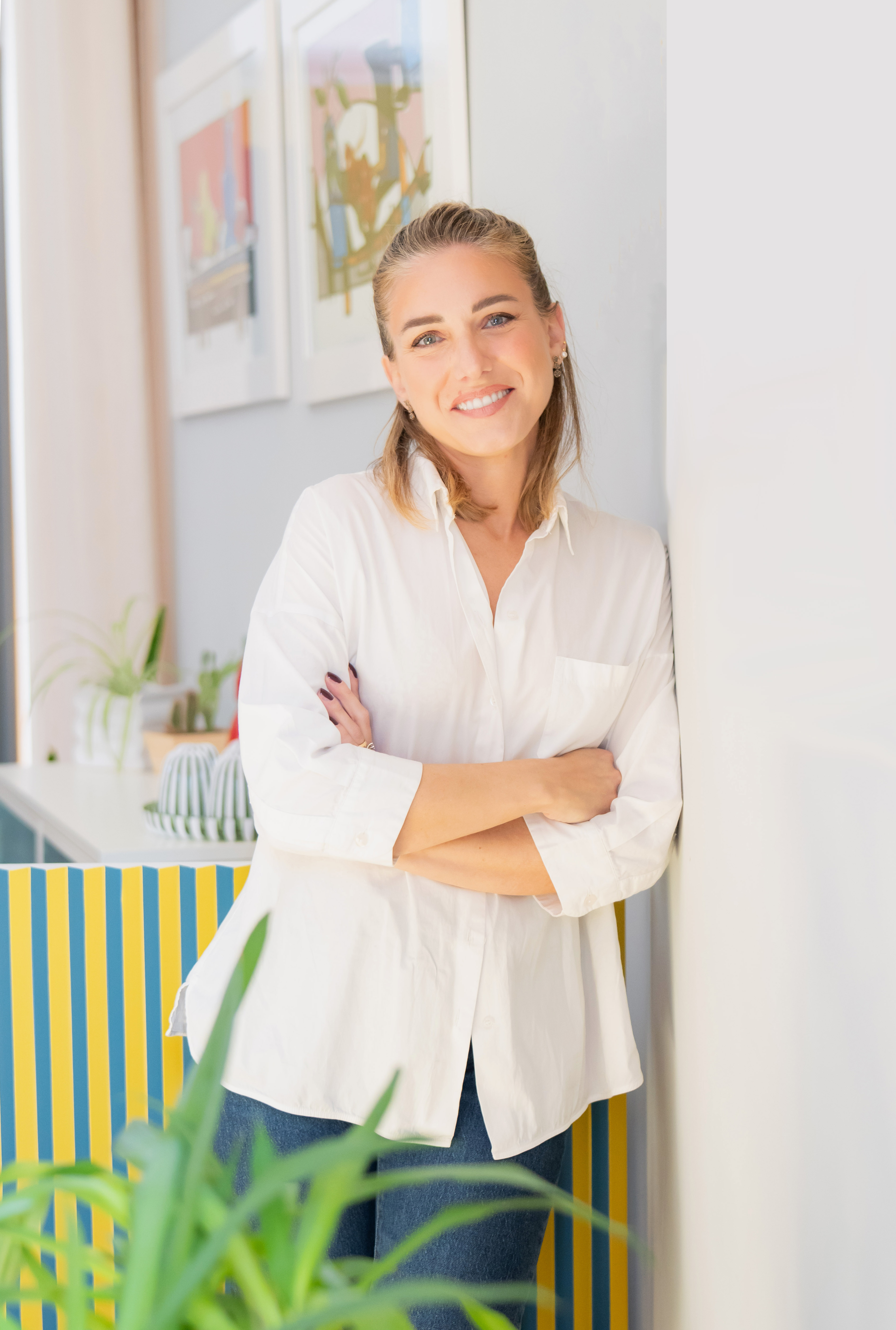
.Ph Marco Baldassarre
The name Giana is a tribute to Janus, the two-faced god, a symbol of transformation and duality. What "two faces" coexist in your objects and spaces? And what does the "third face" you often refer to represent?
This gets to the key point of the Giana Design project, which brings the fourth dimension of design, Time, into play. The two faces of Janus represent past time and future time, passing through the present moment. In relation to Giana's products, such as Madeira, this means that the product changes depending on the observer's point of view and how they move through the environment. We are talking about static and analog furnishing products that nonetheless interact with the user as their point of view changes. By moving around the product, one discovers different faces that can be identified with the past moment and the future moment, but passing through the present moment where the past and future intersect.
Time, light, perception, emotion. In a world dominated by digital stimuli, how can we stimulate user attention and engagement through analog and experiential design?
The great master who can answer this question is surely Escher, who with simple 2D drawings deceived the human mind with his perspectives, tessellations, and impossible staircases, as well as the play of optical illusions. Going back even further, to the Romans, we remember the beautiful Trompe l’oeil, 2D wall drawings that gave you the illusion that the room continued beyond the wall, depicting gardens or starry skies. These are just a few examples of how easy it is to deceive the mind and create engagement in people.
Why not bring all this into furnishing products through material, light, shape, and color to give value and an experience to be lived in environments and to offer ourselves intellectual, playful stimuli and sensations.
Ph: Carlo Oriente
Madeira is a three-dimensional modular element that reinterprets boiserie in a contemporary way. How did this project come about and what makes it so current?
Madeira is the first furnishing product patented at a European level and developed according to the theory of anamorphosis and optical illusions; a three-dimensional wooden boiserie, customizable in its choice of two colors, that introduces the user to a new way of experiencing space, prioritizing well-being and living the fourth dimension of design.
A project that was born thanks to a contest I participated in that called for an idea for a wall decoration, and in that case, I wanted to launch a provocation with a 3D decoration never seen before.
Subsequently, Falegnameria Nacchia embraced my project idea and we began to create the first prototypes. We worked with color, with dimensions, using an MDF support. The first uses of boiserie date back to 17th-century France, a concept I wanted to revisit in a modern key, adapting it to the needs of today's society, which seeks more attention to user well-being.
Colors, surfaces, optical illusions. How does Madeira manage to transform the perception of space and emotionally activate its inhabitants?
An immobile, static, analog but interactive and engaging object, Madeira manages to interact with and stimulate the minds of those who experience and observe it through its pleated shape and the alternation of color. I applied the technique of anamorphosis: a distorted image that reassembles into a recognizable image when viewed from a certain point of view or reflected in a curved mirror. It is an optical illusion process that uses mathematics and perspective to create a surprising visual effect.
Escher was the master of it!
You have lived and worked in Naples, Portugal, and Morocco. How have these cultures, deeply linked to light and material, influenced your way of thinking and making design?
I am fortunate because my eyes have always been immersed in beauty.
Living in Naples with the coast just a stone's throw away and always traveling a lot since I was a child, it was easy for me to gather information and to propose, as an architect, what made me feel good. I understood that light and colors are two essential elements; I studied them and made them a rule of style and design. The cities where I lived, like Marrakesh and Porto, with their traditional architecture, patterns, and geometries, have enriched and influenced my style, leading me also into the world of design and furnishing products.
GIANAdesign also has a strong ethical component: local production, sustainable materials, responsible supply chain. How important is it for you today to combine aesthetic research, user well-being, and environmental responsibility?
The supply chain is a fundamental point for those who do research and design. Reuse, product circularity, are considerations that make the product today, just as it is important to consult local technicians and suppliers.
The dialogue with those who master the material allows you to enter the essence of the project; Giana Design experiments with material and brings out, through the product, the relationships between light, finish, and form.
Well-being in living spaces is also given by the quality of the product and the material used, its reuse, and its adaptability in another environment.
The project has also transformed into a teaching path at the IUAD Academy in Naples. How does the interaction with students enrich your work and open up new research perspectives?
There was a 7-year research journey before reaching this point and the creation of Madeira, and I told myself: if I learned all this by studying, why not make it a teaching project and help future aspiring architects and interior designers understand that beyond the physical and spatial world to manage, there is also an intangible and perceptual one.
The role of the designer and architect must evolve, adapting to new demands and new user needs; we must compete with a world full of stimuli and technology, but mental well-being must not be neglected.
Looking to the future, are you already imagining new evolutions for GIANAdesign? Other materials, other forms, other perceptions to explore?
For those who have a "hunger" for knowledge and discovery, evolution and new ideas are a daily occurrence; Giana design evolves thanks to curiosity, dialogue, the desire to live well in spaces and to make people who rely on architects and designers live in well-being.
Prototypes in sheet metal and fabric, created with parametric tools, are in the pipeline thanks to the collaboration with VAHA - Virtual Architecture Handicraft Art, and other collaborations are emerging with the aim of expanding the Giana project to include various neuroscientific information.
As with all good things, it takes time. GIANAdesign is open to experimentation and collaboration.
Ph: Carlo Oriente
Your work moves in the so-called "fourth dimension": Time. How is this translated into your objects and spaces?
Giana Design's products are experiential because they are lived through time.
If you don't experience them, you can't fully understand them because they change continuously depending on the point of view, the passage of time, the movement of the sun whose light passes through the environment; it is time that defines the perception of the object.
Gestalt theory, Escher, Portuguese azulejos, Moroccan mashrabiyas. How important is the psychology of perception to you in shaping a project? And what role does the interaction between light, material, and movement play in this process?
For a long time, I have been studying and carrying on research on the interaction between the finish of materials and light, to understand the sensations and perceptions. As an architect, creating a good project means improving the quality of life from both a physical and mental point of view, and through research, I understood that studying form and space was not enough. The intangible must be integrated with the material; it is important to involve the senses, frequencies, and vibrations to make an environment or a furnishing product unique, one must enter the neuroscientific field.
Traveling between Morocco and Portugal, I was captivated by the charm of the azulejos for their vitreous finish and by the patterns of the mashrabiyas which, with their play of solids and voids, repeat themselves in the surrounding environment and change depending on the position of the sun. What light provokes stimulates and attracts the user, bringing them into a vibrational dimension.
We remember Escher, who with his 2D drawings was able to take the observer into two "parallel worlds" thanks to visual perception, creating effects of illusion and spatial ambiguity.
In short, what I always tell the students at the Academy is: listen to how your skin reacts when you enter a place, a public space, a house, a restaurant. The skin is our largest sensory organ and communicates information about the external world to our brain; if it's a "good place," it will surely let you know.
Madeira is a three-dimensional modular element that reinterprets boiserie in a contemporary way. How did this project come about and what makes it so current?
Madeira is the first furnishing product patented at a European level and developed according to the theory of anamorphosis and optical illusions; a three-dimensional wooden boiserie, customizable in its choice of two colors, that introduces the user to a new way of experiencing space, prioritizing well-being and living the fourth dimension of design.
A project that was born thanks to a contest I participated in that called for an idea for a wall decoration, and in that case, I wanted to launch a provocation with a 3D decoration never seen before.
Subsequently, Falegnameria Nacchia embraced my project idea and we began to create the first prototypes. We worked with color, with dimensions, using an MDF support. The first uses of boiserie date back to 17th-century France, a concept I wanted to revisit in a modern key, adapting it to the needs of today's society, which seeks more attention to user well-being.
Colors, surfaces, optical illusions. How does Madeira manage to transform the perception of space and emotionally activate its inhabitants?
An immobile, static, analog but interactive and engaging object, Madeira manages to interact with and stimulate the minds of those who experience and observe it through its pleated shape and the alternation of color. I applied the technique of anamorphosis: a distorted image that reassembles into a recognizable image when viewed from a certain point of view or reflected in a curved mirror. It is an optical illusion process that uses mathematics and perspective to create a surprising visual effect.
Escher was the master of it!
You have lived and worked in Naples, Portugal, and Morocco. How have these cultures, deeply linked to light and material, influenced your way of thinking and making design?
I am fortunate because my eyes have always been immersed in beauty.
Living in Naples with the coast just a stone's throw away and always traveling a lot since I was a child, it was easy for me to gather information and to propose, as an architect, what made me feel good. I understood that light and colors are two essential elements; I studied them and made them a rule of style and design. The cities where I lived, like Marrakesh and Porto, with their traditional architecture, patterns, and geometries, have enriched and influenced my style, leading me also into the world of design and furnishing products.
GIANAdesign also has a strong ethical component: local production, sustainable materials, responsible supply chain. How important is it for you today to combine aesthetic research, user well-being, and environmental responsibility?
The supply chain is a fundamental point for those who do research and design. Reuse, product circularity, are considerations that make the product today, just as it is important to consult local technicians and suppliers.
The dialogue with those who master the material allows you to enter the essence of the project; Giana Design experiments with material and brings out, through the product, the relationships between light, finish, and form.
Well-being in living spaces is also given by the quality of the product and the material used, its reuse, and its adaptability in another environment.
The project has also transformed into a teaching path at the IUAD Academy in Naples. How does the interaction with students enrich your work and open up new research perspectives?
There was a 7-year research journey before reaching this point and the creation of Madeira, and I told myself: if I learned all this by studying, why not make it a teaching project and help future aspiring architects and interior designers understand that beyond the physical and spatial world to manage, there is also an intangible and perceptual one.
The role of the designer and architect must evolve, adapting to new demands and new user needs; we must compete with a world full of stimuli and technology, but mental well-being must not be neglected.
Looking to the future, are you already imagining new evolutions for GIANAdesign? Other materials, other forms, other perceptions to explore?
For those who have a "hunger" for knowledge and discovery, evolution and new ideas are a daily occurrence; Giana design evolves thanks to curiosity, dialogue, the desire to live well in spaces and to make people who rely on architects and designers live in well-being.
Prototypes in sheet metal and fabric, created with parametric tools, are in the pipeline thanks to the collaboration with VAHA - Virtual Architecture Handicraft Art, and other collaborations are emerging with the aim of expanding the Giana project to include various neuroscientific information.
As with all good things, it takes time. GIANAdesign is open to experimentation and collaboration.

